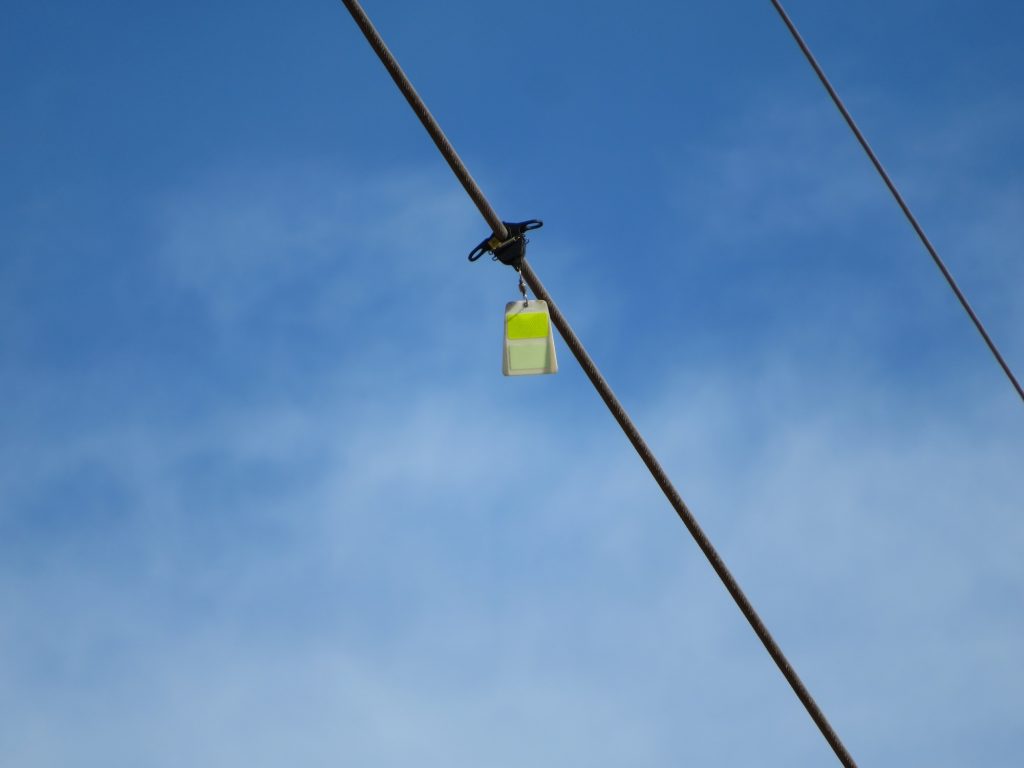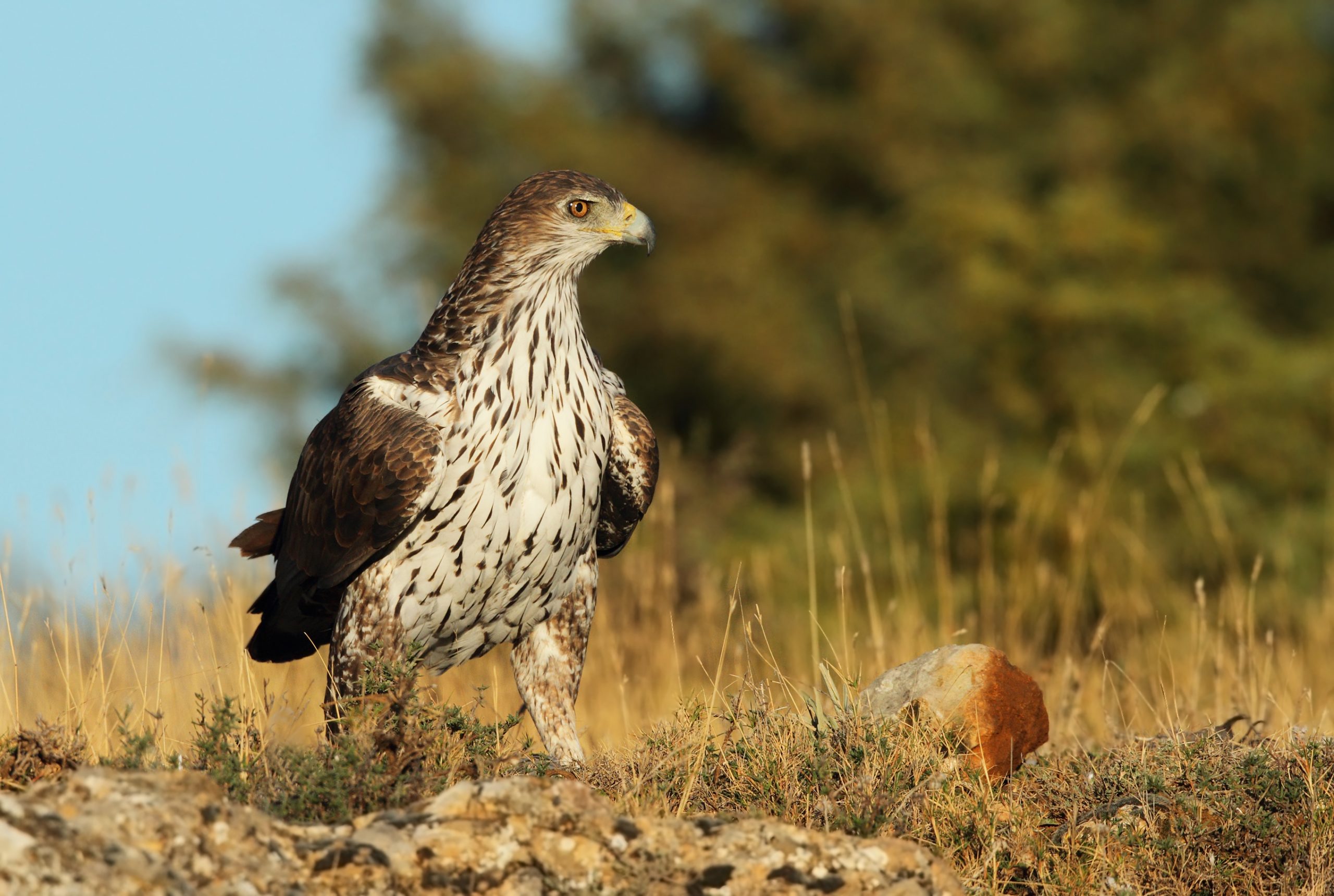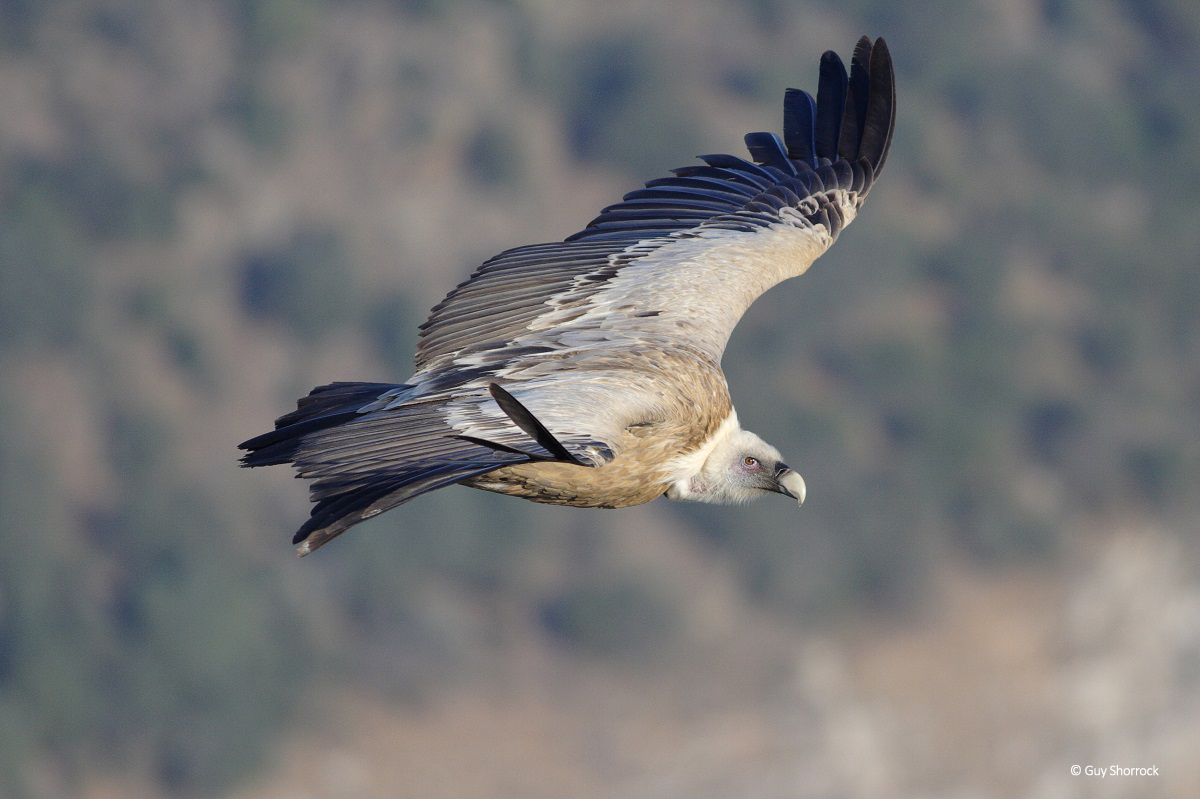Overhead power lines can often have negative impacts for wildlife – especially birds. Collisions with these structures are responsible for the death of millions of birds throughout the world, especially raptors and other large birds, and have the potential to negatively affect their populations. With a continuously expanding power line network, it is becoming increasingly challenging to find solutions and mitigate the negative impacts that this has on birds.
To reduce bird collisions with power lines, conservationists use various methods of wire-marking to make overhead power lines more visible to birds. A study published in the Journal of Environmental Management (Bernardino et al. 2019) evaluated the overall effectiveness of wire-marking in reducing bird collisions with power lines and showed that these are reduced by 50% on average. In Cyprus, some dangerous high-voltage lines have already been marked with specialized devices known as “fireflies” in order to make them more visible to birds and minimise collisions. These are high-voltage power lines located in areas used by large-sized migratory birds as well as resident birds of prey, such as the Bonelli’s Eagle. Such anti-collision devices will also be used to mark power lines identified as dangerous for the Griffon Vulture, as part of the ‘LIFE with Vultures’ project.

In Cyprus, at least one probable vulture collision incident with power lines has been recorded so far (December 2018), which has led to the death of one Griffon Vulture. Given the critically small size of the Cypriot population (approximately 20 birds) and its susceptibility to extinction, even the loss of one bird to collisions with power lines constitutes a significant blow to the population. (It is worth noting here that most collision victims are never found, so the threat is routinely under-detected).


For this reason, the ‘LIFE with Vultures’ project team conducted a study to identify the most dangerous power lines for vulture collisions. These power lines were marked on maps that include areas used by the vultures. In these areas, the study analysed the heights at which vultures fly and identified risky flight zones in relation to the heights of the electricity pylons and the overhead power lines. All vulture movement data were retrieved from specialised GPS transmitters fitted to a number of vultures. The project team also took into consideration other factors such as the estimated home and core ranges of the vultures, the locations of feeding stations and acclimatization aviaries, and key feeding, breeding and roosting sites. The parts of power lines identified as most dangerous will be marked with fireflies in collaboration with the Electricity Authority of Cyprus. The project team will be conducting monitoring surveys at the identified lines to evaluate their effectiveness in reducing collisions and/or electrocutions.
Continuous research and monitoring are essential to better understand the key threats facing the Griffon Vulture and other raptors, and to guide relevant conservation and management actions. Identifying and marking dangerous power lines is one of many actions undertaken by the ‘LIFE with Vultures’ project team to address the key threats to the species.


